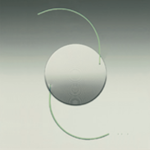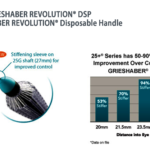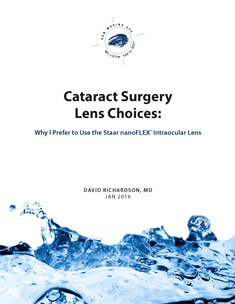There are currently two very good multifocal IOLs available in the USA: the Alcon ReSTOR® +3 and the AMO Tecnis® Multifocal Advanced Technology IOLs. Both this, as well as the next, post will review recent comparisons of the Alcon ReSTOR +3 and the AMO Tecnis® Multifocal Advanced Technology IOLs provided by respected cataract surgeons. Although they are paid consultants for AMO, I respect their assessment and felt that these personal communications were unbiased enough to benefit the readers of my blog.
The first communication is from Dr. William Trattler. I have paraphrased him in as follows: Elizabeth Davis, Carlos Buznego, William Trattler, and Guy Kezirian reviewed the Datalink database of visual results from many surgeons across the USA. Liz Davis presented these results at the Aspen Invitational Refractive Symposium meeting (this data was also presented as a poster at ASCRS in 2010).
Other IOLs were also assessed in the retrospective review. However, relevant to this discussion – part of the study was a comparison of the Restor D1 (+3) and Tecnis MF (Multifocal). In order to compare apples to apples, only a subset of eyes were evaluated (essentially those with normal anatomy and whose “target refraction” was achieved). In all, 391 Restor® +3 IOLs were compared to 145 Tecnis® multifocal IOLs.
The results of vision without glasses were as follows:
- Distance Vision: They each achieved (on average) 20/25 vision. No statistical difference was noted between the two IOLs.
- Intermediate Vision: Similar results. Again, no statistical difference between the two IOLs.
- Near Vision: Not surprisingly, there was a statistical difference between the two IOLs with the Tecnis multifocal IOL just barely edging out the ReSTOR® +3. I say “not surprisingly” as the Technis® multifocal IOL has a stronger “add” so one would expect a better near result.
Dr. Trattler points out the following potential limitations in the study.
A. Some sampling bias may be present
B. Number of eyes analyzed are different with each lens
C. Tecnis eyes contributed by a small number of surgeons
D. This analysis does not control for pupil size (Pupil size may affect performance of Advanced Technology or “Presby-IOL’s”)
E. Vision quality was not evaluated (glare, visual function in low light, contrast acuity, etc.).
F. Pre and postoperative medications can be completely different between the groups. We do not know if one group was more aggressive at treating preoperative dry eye and blepharitis (note – Dr. Trattler contributed cases to both the Restor and Tecnis MF data.)
Thus, it appears that both of these Advanced Technology IOLs are performing very well with regard to what we call “Snellen vision” (the black letters on white background vision tests done in a dark room). Clearly, as our lives are lived in a world of complex colors, textures, and lighting, the Snellen vision is not a true measurment of the performance of a particular IOL.
Also, as Dr. Trattler points out, it should be noted that this group of patients were optimal patients, with low preop and postop astigmatism, and on target spherical equivalents. So, these results will not apply to everyone considering cataract surgery with an Advanced Technology IOL.
So, what other information can be used to choose between these two IOLs? I’ll discuss that in my next post.
——————————————-
BTW, Dr. William Trattler can be reached at:
Center For Excellence In Eye Care
8940 North Kendall Drive; #400E
Miami, FL 33176
305-598-2020
www.centerforeyecare.com
——————————————-
AMO Tecnis Multifocal vs. Alcon ReSTOR +3 Advanced Technology IOLs (Part 2 of 2)
Results of a study performed by Dr. Uday Devgan on AMO Tecnis Multifocal and Alcon ReSTOR +3 Advanced Technology IOLs








I truly appreciate this article.Really looking forward to read more. Awesome.